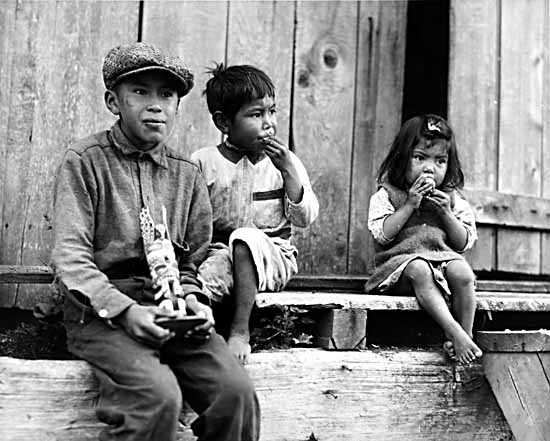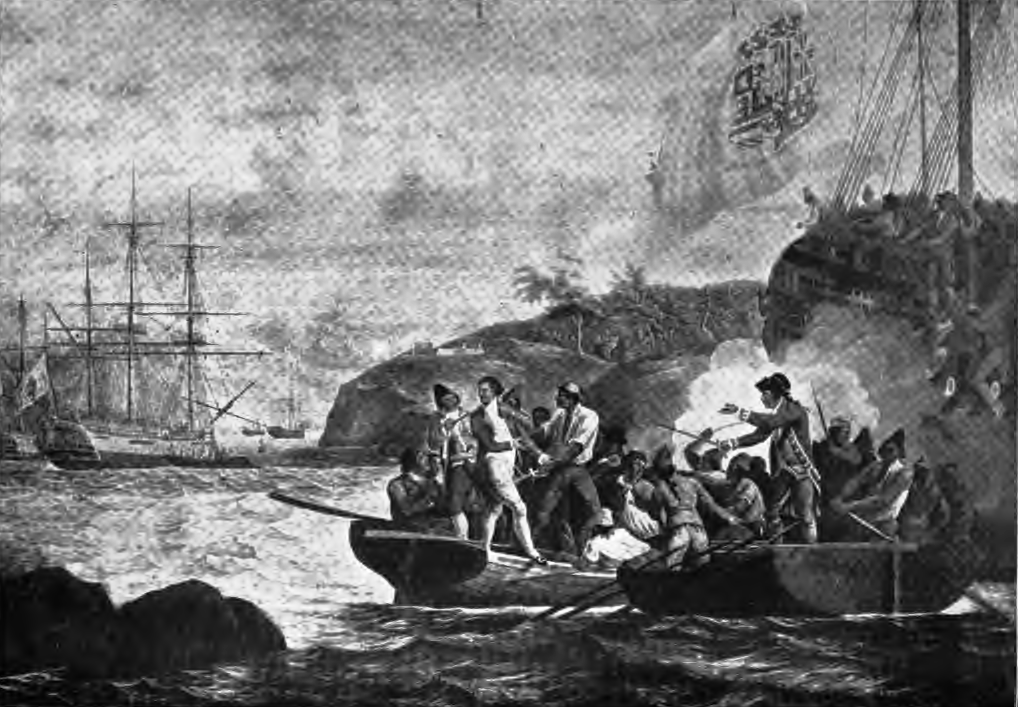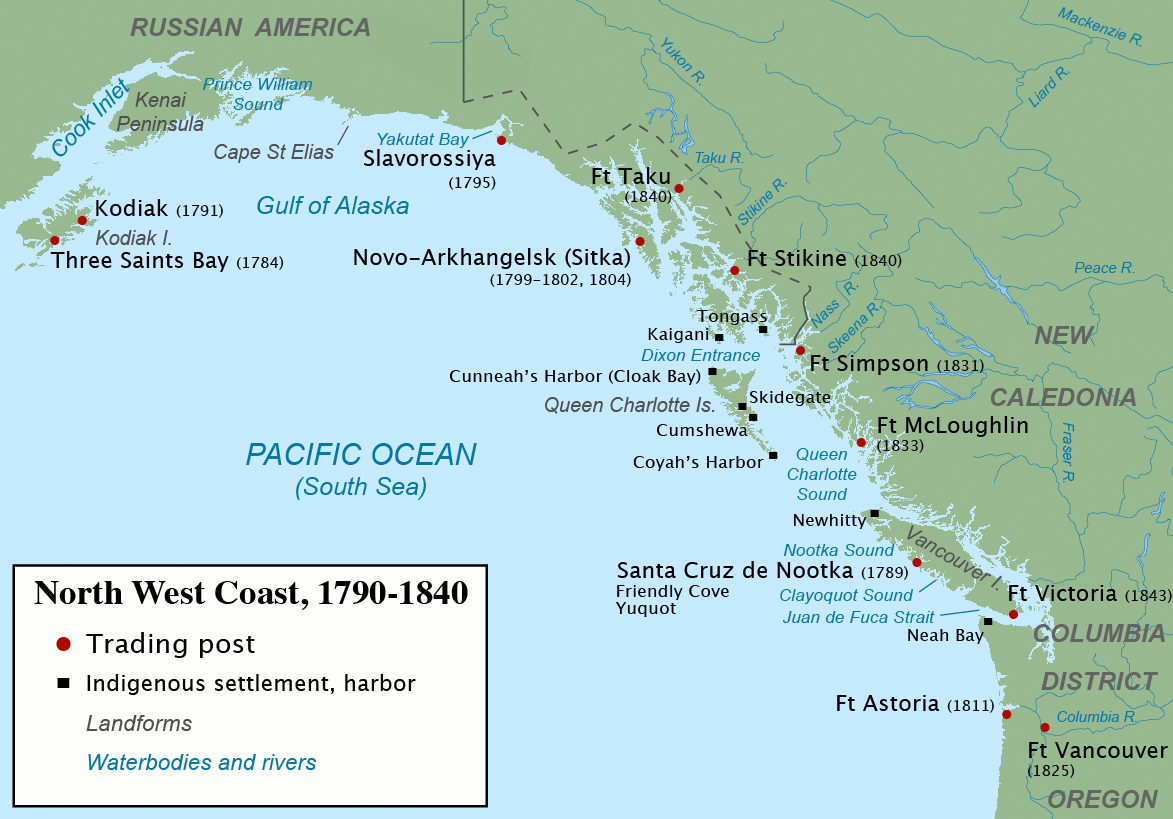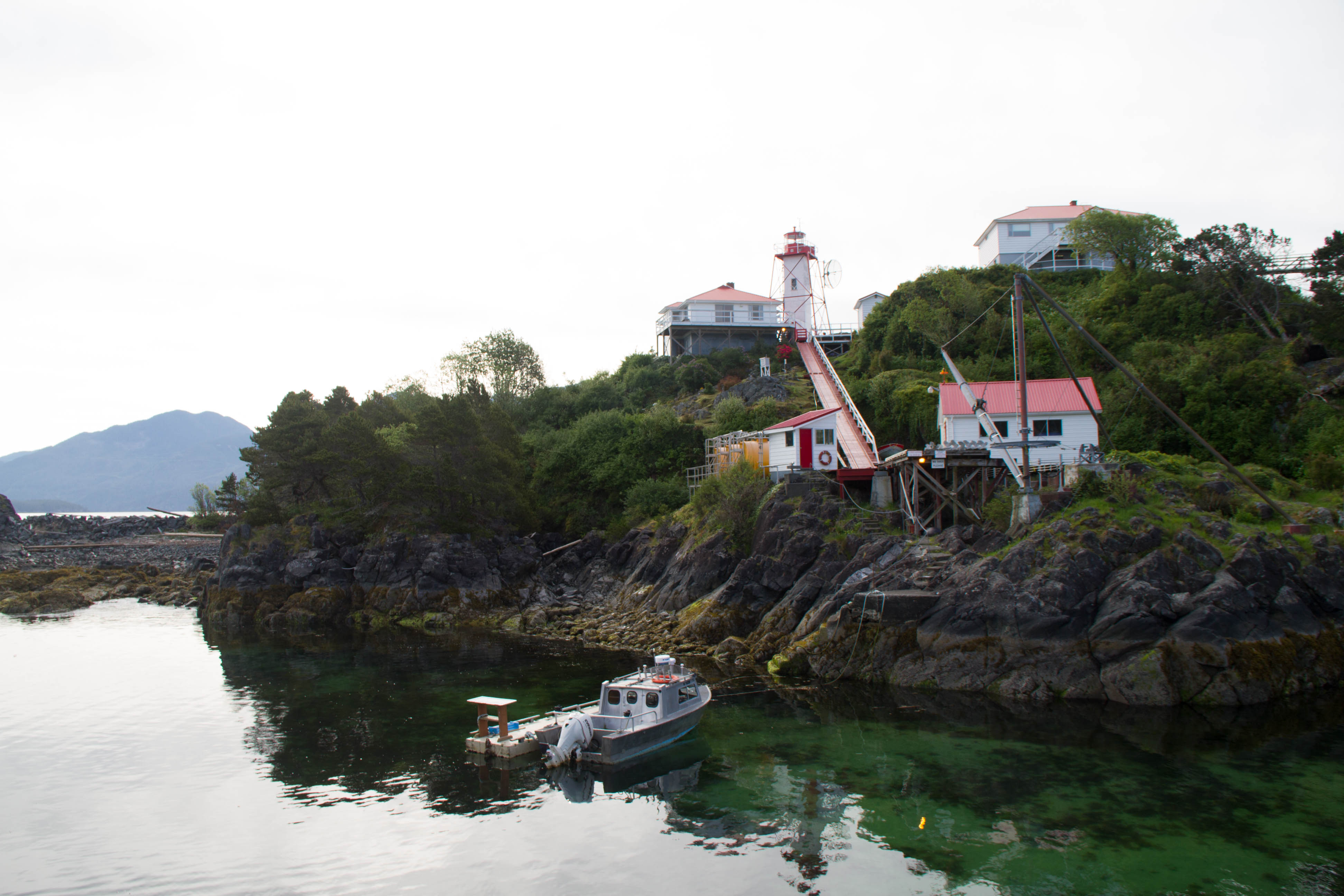|
Yuquot
Yuquot , also known as Friendly Cove, is a small settlement of around six people—the Williams family of the Mowachaht band—plus two full-time lighthouse keepers, located on Nootka Island in Nootka Sound, just west of Vancouver Island, British Columbia, Canada. It was the summer home of Chief Maquinna and the Mowachaht/Muchalaht (Nuu-chah-nulth) people for generations, housing approximately 1,500 people in 20 traditional wooden longhouses. The name means "Wind comes from all directions" in Nuu-chah-nulth. The community is located within the Strathcona Regional District but like all Indian Reserve communities is not governed by nor represented in the regional district. The Mowchaht/Muchalaht First Nations are rather part of the Nuu-chah-nulth Tribal Council, which unites the governments of the indigenous communities of the Island's West Coast. The Canadian government declared Friendly Cove a National Historic Site in 1923, with recognition of the significance of the Spanish c ... [...More Info...] [...Related Items...] OR: [Wikipedia] [Google] [Baidu] |
Santa Cruz De Nuca
Santa Cruz de Nuca (or Nutca) was a Spanish colonial fort and settlement and the first European colony in what is now known as British Columbia. The settlement was founded on Vancouver Island in 1789 and abandoned in 1795, with its far northerly position making it the "high-water mark" of verified northerly Spanish settlement along the North American west coast. The colony was established with the Spanish aim of securing the entire west coast of the continent from Alaska southwards, for the Spanish crown. Due to the presence and activities of several British maritime fur trading ships in the same region, and the Russian colonization of Alaska further north, this Spanish attempt at making such a substantial claim for possession and conquest along the North American west coast failed. The colony was briefly abandoned between October 1789 and April 1790. In 1795 the colony was permanently abandoned following the settlement and signing of the Nootka Convention. This final Spanish ... [...More Info...] [...Related Items...] OR: [Wikipedia] [Google] [Baidu] |
Maquinna
Maquinna (also transliterated Muquinna, Macuina, Maquilla) was the chief of the Nuu-chah-nulth people of Nootka Sound, during the heyday of the maritime fur trade in the 1780s and 1790s on the Pacific Northwest Coast. The name means "possessor of pebbles". His people are today known as the Mowachaht and reside today with their kin, the Muchalaht, at Gold River, British Columbia, Canada. History Maquinna was a powerful chief whose summer coastal village, Yuquot, became the first important anchorage in the European jockeying for power and commerce as the era of the maritime fur trade began. Yuquot became known as Friendly Cove after the British explorer Captain James Cook visited in 1778. Cook did not record the name of the chief of Yuquot, who may not have been Maquinna in 1778, even though writers have often assumed it was. Imperial Spain had sent two voyages to the region before Cook's visit, including Juan Pérez, who in 1774 had anchored in or near the entrance of Nootk ... [...More Info...] [...Related Items...] OR: [Wikipedia] [Google] [Baidu] |
James Cook
James Cook (7 November 1728Old Style date: 27 October – 14 February 1779) was a British explorer, navigator, cartographer, and captain in the British Royal Navy, famous for his three voyages between 1768 and 1779 in the Pacific Ocean and to New Zealand and Australia in particular. He made detailed maps of Newfoundland prior to making three voyages to the Pacific, during which he achieved the first recorded European contact with the eastern coastline of Australia and the Hawaiian Islands, and the first recorded circumnavigation of New Zealand. Cook joined the British merchant navy as a teenager and joined the Royal Navy in 1755. He saw action in the Seven Years' War and subsequently surveyed and mapped much of the entrance to the St. Lawrence River during the siege of Quebec, which brought him to the attention of the Admiralty and the Royal Society. This acclaim came at a crucial moment for the direction of British overseas exploration, and it led to his commission in ... [...More Info...] [...Related Items...] OR: [Wikipedia] [Google] [Baidu] |
Nuu-chah-nulth Children In Friendly Cove
The Nuu-chah-nulth (; Nuučaan̓uł: ), also formerly referred to as the Nootka, Nutka, Aht, Nuuchahnulth or Tahkaht, are one of the indigenous peoples of the Pacific Northwest Coast in Canada. The term Nuu-chah-nulth is used to describe fifteen related tribes whose traditional home is on the west coast of Vancouver Island. In precontact and early post-contact times, the number of tribes was much greater, but the smallpox epidemics and other consequences of settler colonization resulted in the disappearance of some groups and the absorption of others into neighbouring groups. The Nuu-chah-nulth are related to the Kwakwaka'wakw, the Haisla, and the Ditidaht First Nation. The Nuu-chah-nulth language belongs to the Wakashan family. The governing body is the Nuu-chah-nulth Tribal Council. History Contact with Europeans When James Cook first encountered the villagers at Yuquot in 1778, they directed him to "come around" (Nuu-chah-nulth ''nuutkaa'' is "to circle around")Camp ... [...More Info...] [...Related Items...] OR: [Wikipedia] [Google] [Baidu] |
Fort San Miguel
Fort San Miguel was a Spanish fortification at Yuquot (formerly Friendly Cove) on Nootka Island, just west of north-central Vancouver Island. It protected the Spanish settlement, called Santa Cruz de Nuca, the first colony in British Columbia. History It was first built by Esteban José Martínez in 1789 but dismantled in October of that year. It was then rebuilt and enlarged in 1790 then Nootka Sound was reoccupied by Francisco de Eliza. The fort was essentially an artillery land battery for the defence of the harbour and buildings. The Spanish settlement, called Santa Cruz de Nuca, was the first colony in British Columbia. The fort lay near the home of Maquinna, chief of the Mowachaht group, who are now in the joint Mowachaht/Muchalaht First Nations band government with the Muchalaht at Gold River nearby on Vancouver Island. On May 15, 1789, Martínez chose the location of his fortification at the entrance of Friendly Cove on Hog Island. Work progressed so that on M ... [...More Info...] [...Related Items...] OR: [Wikipedia] [Google] [Baidu] |
Mowachaht/Muchalaht First Nations
The Mowachaht/Muchalaht First Nations are a First Nations government on the west coast of Vancouver Island in the Canadian province of British Columbia. The Mowachaht/Muchalaht First Nations are a member nation of the Nuu-chah-nulth Tribal Council, which spans all Nuu-chah-nulth-aht peoples (incorrectly known as "Nootka") except for the Pacheedaht First Nation. Their main reserve is at Gold River, British Columbia but the Mowachaht are originally from Yuquot on Nootka Sound, known to history as Friendly Cove, scene of the Nootka Incident and, later, the negotiations and eventual implementation of the Nootka Conventions between Britain and Spain, hosted by the Mowachaht chief Maquinna. Name The Mowachaht (pronounced ), which translates to people of the deer, originate from a place called Friendly Cove, or Yuquot (translates to "Wind comes from all directions"). The name Muchalaht translates to the people who hover over the river or the people over the river. History In the mid- ... [...More Info...] [...Related Items...] OR: [Wikipedia] [Google] [Baidu] |
Nootka Sound
, image = Morning on Nootka Sound.jpg , image_size = 250px , alt = , caption = Clouds over Nootka Sound , image_bathymetry = , alt_bathymetry = , caption_bathymetry = Map of Nootka Sound , location = Vancouver Island, British Columbia , group = , coordinates = , type = Sound , etymology = , part_of = , inflow = , rivers = , outflow = , oceans = Pacific Ocean , catchment = , basin_countries = , agency = , designation = , date-built = , engineer = , date-flooded = , length = , width = , area = , depth = , max-depth = , volume = , residence_time = , salinity = , shore = , elevation = , temperature_hi ... [...More Info...] [...Related Items...] OR: [Wikipedia] [Google] [Baidu] |
Vancouver Island
Vancouver Island is an island in the northeastern Pacific Ocean and part of the Canadian province of British Columbia. The island is in length, in width at its widest point, and in total area, while are of land. The island is the largest by area and the most populous along the west coasts of the Americas. The southern part of Vancouver Island and some of the nearby Gulf Islands are the only parts of British Columbia or Western Canada to lie south of the 49th parallel. This area has one of the warmest climates in Canada, and since the mid-1990s has been mild enough in a few areas to grow Mediterranean crops such as olives and lemons. The population of Vancouver Island was 864,864 as of 2021. Nearly half of that population (~400,000) live in the metropolitan area of Greater Victoria, the capital city of British Columbia. Other notable cities and towns on Vancouver Island include Nanaimo, Port Alberni, Parksville, Courtenay, and Campbell River. Vancouver Island is the ... [...More Info...] [...Related Items...] OR: [Wikipedia] [Google] [Baidu] |
Nuu-chah-nulth Language
Nuu-chah-nulth (), Nootka (), is a Wakashan language in the Pacific Northwest of North America on the west coast of Vancouver Island, from Barkley Sound to Quatsino Sound in British Columbia by the Nuu-chah-nulth peoples. Nuu-chah-nulth is a Southern Wakashan language related to Nitinaht and Makah. It is the first language of the indigenous peoples of the Pacific Northwest Coast to have documentary written materials describing it. In the 1780s, Captains Vancouver, Quadra, and other European explorers and traders frequented Nootka Sound and the other Nuu-chah-nulth communities, making reports of their voyages. From 1803–1805 John R. Jewitt, an English blacksmith, was held captive by chief '' Maquinna'' at Nootka Sound. He made an effort to learn the language, and in 1815 published a memoir with a brief glossary of its terms. Name The provenance of the term "Nuu-chah-nulth", meaning "along the outside f Vancouver Island dates from the 1970s, when the various gro ... [...More Info...] [...Related Items...] OR: [Wikipedia] [Google] [Baidu] |
Maritime Fur Trade
The maritime fur trade was a ship-based fur trade system that focused on acquiring furs of sea otters and other animals from the indigenous peoples of the Pacific Northwest Coast and natives of Alaska. The furs were mostly sold in China in exchange for tea, silks, porcelain, and other Chinese goods, which were then sold in Europe and the United States. The maritime fur trade was pioneered by Russians, working east from Kamchatka along the Aleutian Islands to the southern coast of Alaska. British and Americans entered during the 1780s, focusing on what is now the coast of British Columbia. The trade boomed around the beginning of the 19th century. A long period of decline began in the 1810s. As the sea otter population was depleted, the maritime fur trade diversified and transformed, tapping new markets and commodities, while continuing to focus on the Northwest Coast and China. It lasted until the middle to late 19th century. Russians controlled most of the coast of present-d ... [...More Info...] [...Related Items...] OR: [Wikipedia] [Google] [Baidu] |
Nootka Island
Nootka Island (french: île Nootka) is an island adjacent to Vancouver Island in British Columbia, Canada. It is in area. It is separated from Vancouver Island by Nootka Sound and its side-inlets, and is located within Electoral Area A of the Strathcona Regional District. Europeans named the island after a Nuu-chah-nulth language word meaning "go around, go around". They likely thought the natives were referring to the island itself. The Spanish and later English applied the word to the island and the sound, thinking they were naming both after the people. In the 1980s, the First Nations in Canada, First Nations peoples in the region created the collective Endonym, autonym of ''Nuu-chah-nulth'', a term that means "along the outside (of Vancouver Island)". An older term for this group of peoples was "Aht", which means "people" in their language and is a component in all the names of their subgroups, and of some locations (e.g. Yuquot, Mowachaht, Kyuquot, Opitsaht etc.). Cli ... [...More Info...] [...Related Items...] OR: [Wikipedia] [Google] [Baidu] |








